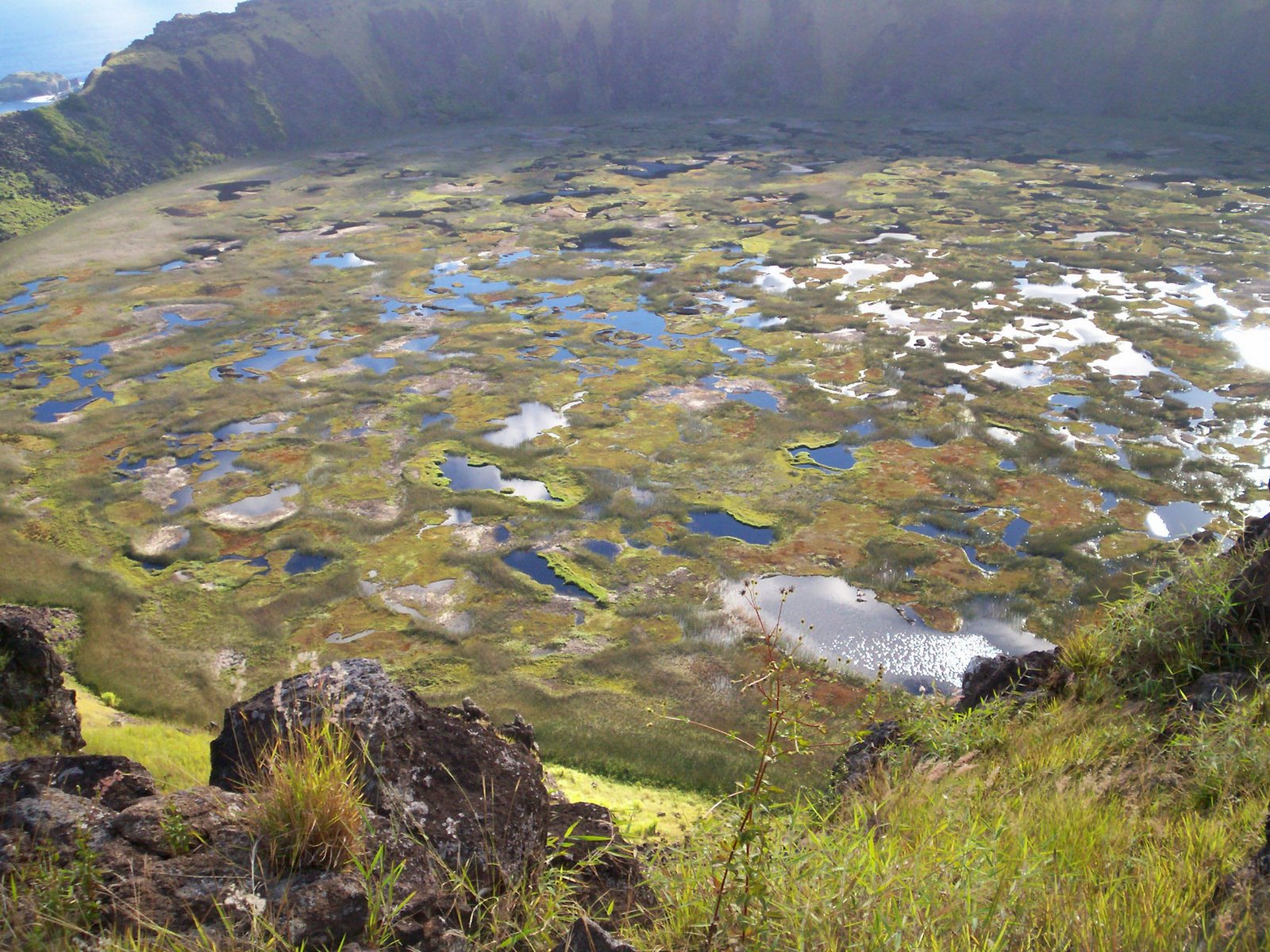 (Image: University of Hawai`i-Manoa greenhouse where carbon uptake research was performed y varying atmospheric carbon-dioxide levels. Credit: UH-Manoa.)
(Image: University of Hawai`i-Manoa greenhouse where carbon uptake research was performed y varying atmospheric carbon-dioxide levels. Credit: UH-Manoa.)Saturday, April 6, 2013
Climate research: Hawaii, Louisiana researchers reconcile ancientland-sea carbon differences
In the incredibly complex business of trying to understand
past climate change by studying rocks and sediment cores, researchers keep
fine-tuning.
That’s important because it helps understand how climate
change will impact us in the future.
 (Image: University of Hawai`i-Manoa greenhouse where carbon uptake research was performed y varying atmospheric carbon-dioxide levels. Credit: UH-Manoa.)
(Image: University of Hawai`i-Manoa greenhouse where carbon uptake research was performed y varying atmospheric carbon-dioxide levels. Credit: UH-Manoa.)
In an important piece of work, much of it done at University
of Hawai`i greenhouses, researchers have helped understand why carbon isotope
ratios seem to be laid down differently in land environments than in marine
environments.
When science compares the amount of standard carbon, or
carbon-12, to an isotope of carbon like carbon-13, a change the ratio is called
an “excursion.”
When the amount of carbon dioxide in
the atmosphere changes, the ratio of C12 to C13 changes as well.
There are bigger excursions in terrestrial rocks
than marine rocks of the same age.
University of Hawai`i-Manoa geology professor A. Hope Jahren
and University of Louisiana-Lafayette geologist Brian Schubert studied the
issue and published their results in an April 3 article in the scientific journal Nature Communications.
Jahren grew plants in a Manoa greenhouse, where she varied
the atmosphere to study them at different carbon-dioxide levels. She found that
when carbon-dioxide is higher, the plants incorporate more C12 and a lower
proportion of C13. In the ancient past, when plants died and became part of
sedimentary rocks, that ratio was preserved—helping researchers calculate
ancient carbon dioxide levels.
Carbon behaves differently in the oceans. When atmospheric
carbon dioxide goes up, some of it is dissolved in the oceans, and impacts the
carbon cycle there. But marine carbon use is complex and quite different from
that on land.
“Our new model reconciles the differences based on the
fundamentally different nature of carbon cycling on land compared to the ocean,
injecting a more sophisticated view of ecology into current paleoclimatology,” Jahren
said.
It means that science can now use the marine and terrestrial
geologic records together as they study ancient climate and reconstruct ancient
carbon dioxide levels.
One of the scary pieces they draw out of the data: Schubert
said that during a very warm climate period 55 million years ago, carbon
dioxide levels were far lower than what we expect in the next couple of hundred
years.
What could that mean? One presumes it could mean that
climate will be hotter than anticipated in coming decades, that storm systems
will change more dramatically, that sea levels will rise faster, that climate
zones (think dust bowls) will move, and all the rest.
© 2013 Jan TenBruggencate
Citation: Schubert,
B.A. and A.H. Jahren. Reconciliation of marine and terrestrial carbon isotope
excursions based on changing atmospheric CO2 levels. Nat. Commun. doi:
10.1038/ncomms2659 (2013)
Posted by Jan T at 9:14 AM
Labels: Agriculture, Climate Change, Marine Issues, Oceanography, Reefs, technology, Weather
Subscribe to:
Post Comments (Atom)






No comments:
Post a Comment